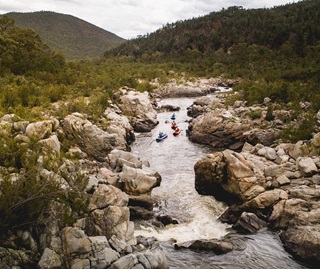Policy adopted June 1989
Policy last updated May 2022
Scope and application
This policy applies to all lands acquired or reserved under the National Parks and Wildlife Act 1974 (NPW Act) except for lands reserved under Part 4A of the Act (unless the Board of Management for those lands has adopted the policy). However, NPWS staff can use the policy as guidance in their dealings with Boards of Management.
This policy sits within the context of the department's risk management system (internal information available to staff). It should be considered in relation to the Work Health and Safety legislation.
Objectives
This policy sets out the department's approach to managing risks to visitor safety on NPWS-managed lands.
Definitions
The Asset Management System is NPWS's primary business tool to support the planning and delivery of asset management. It provides a corporate master list of all assets NPWS owns and maintains.
Hazard means a potential or existing condition that may cause harm to people or damage to property or the environment (Emergency Management Australia 1998 – Australian Emergency Management Glossary).
Incapable person means a person who, because of their young age or physical or intellectual disability, cannot understand a risk warning.
Management response means the treatment of a risk or the process of selecting and implementing risk-mitigation measures.
Plans of management are statutory documents that are required by, and prepared in accordance with, the NPW Act, and which set out every aspect of a park's specific management requirements.
Risk means a measure of the probability and severity of an adverse effect to health, property or the environment. Risk is often expressed as a combination of the likelihood of an event's occurrence and its consequences (AS/NZS ISO 31000:2009 – Risk Management).
Risk assessment is the process of identifying, analysing and evaluating risks.
Risk treatment plan means documented agreed action(s) or measures (additional to existing controls) to avoid, reduce, remove, modify or share a risk.
Risky recreational activity means an activity or recreational pursuit that involves risking the safety of a person engaging in the activity or that of other persons; and which is prohibited without consent under Clause 25 of the National Parks and Wildlife Regulation 2019.
Accountabilities
This section outlines NPWS staff with significant responsibilities for ensuring implementation of the policy.
| Paragraph |
Position accountable |
| 13. Endorsement of deviation from the risk management system |
NPWS Deputy Secretary |
| 14-16. Establishment and endorsement of branch visitor safety risk registers |
Branch Directors |
| 17. Visitor risk data audit |
NPWS Safety, Risk and Compliance Team |
| 35. Consent to undertake risky recreational activities |
Area Manager or Team Leader, Resorts Environmental Services Team |
| 38. Notification of site-specific risks |
Area Manager or Team Leader, Resorts Environmental Services Team |
| 40. Provision of specific facilities for certain recreational activities |
Area Manager or Team Leader, Resorts Environmental Services Team |
| 59. Closure of a park or part of a park |
Director |
| 64. Approving risk treatment plans and certifying their implementation |
Director |
| 67-68. General safety messages and information for use online, and in publications and promotional media |
Manager, Safety, Risk and Compliance Team |
| 69. General warnings |
Area Manager or Team Leader, Resorts Environmental Services Team |
 This policy outlines how the NSW National Parks and Wildlife Service (NPWS) addresses safety issues and reduces risk to park visitors while maintaining park values.
This policy outlines how the NSW National Parks and Wildlife Service (NPWS) addresses safety issues and reduces risk to park visitors while maintaining park values. 
